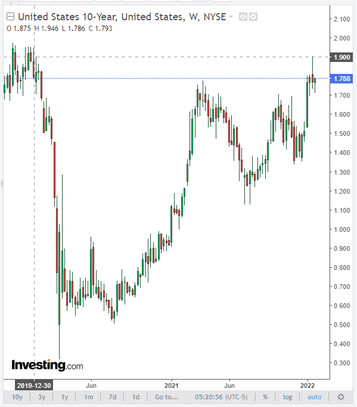The Australian dollar strengthened sharply today at the beginning of the Asian trading session, having received support from the Australian Bureau of Statistics, which published fresh inflation data. According to the ABS, the consumer price index rose in the 4th quarter by +1.3% (+3.5% in annual terms). Core CPI rose by +1.0%, and its annual growth rate accelerated to +2.6%, the highest since 2014. "Shortage of building materials and labor, combined with strong demand for new housing, have contributed to higher prices for new houses and apartments", ABS commented, adding that problems in global supply chains and shortages of some goods, combined with rising transport tariffs and strong demand led to a rise in prices for many goods, including materials for housing construction, cars, furniture, and audio and video equipment.
After the publication of the report by the Australian Bureau of Statistics, the AUD/USD pair rose to an intraday high of 0.7172, but during the Asian trading session it declined, dropping to the local support level 0.7130.
Investors are now assessing high inflation in the US and the likelihood that the Fed will have to raise rates more aggressively this year to contain price increases. Market participants are also set on the fact that the Fed, after raising interest rates, will begin to reduce its asset portfolio (the Fed's balance sheet is now $8.8 trillion). The current accelerated reduction in asset purchases by the Fed and expectations of the start of a cycle of interest rate hikes in March are already pushing US Treasury yields higher. Last week, the yield on 10-year US bonds exceeded 1.900%. The dollar, as you know, is sensitive to the growth of government bond yields, since this growth has an inverse correlation with the cost of government bonds. Growth in sales of government bonds is accelerating, causing an increase in their yield and, accordingly, demand for the dollar.

However, the Fed's interest rate is expected to remain at 0.25% at the January meeting. Market participants will carefully study the comments of the Fed leaders. Thus, during the period when the rate decision is published, volatility can increase sharply throughout the financial market, primarily in the US stock market and in dollar quotes, especially if the rate decision differs from the forecast or unexpected statements are received from the Fed management.

As for the AUD and the monetary policy of the RBA, its next meeting will be held next week. Australia's 4th quarter inflation data released today was well above expectations. With the Australian labor market continuing to strengthen, creating the conditions for accelerated wage growth, this allows many economists to predict an earlier start to the tightening of the RBA policy. According to their new forecast, the RBA will raise the key rate in August 2022, and not in the 4th quarter, as previously expected. If at the meeting next Tuesday the RBA leaders confirm the possibility of such a scenario, then the AUD can get good support. With the Fed and, now expected, the RBA to start tightening their monetary policies this year, we are yet to see sharp fluctuations in the AUD/USD price trajectory. In the meantime, the downward dynamics of this currency pair is preserved, leaving an advantage for short positions on it.





